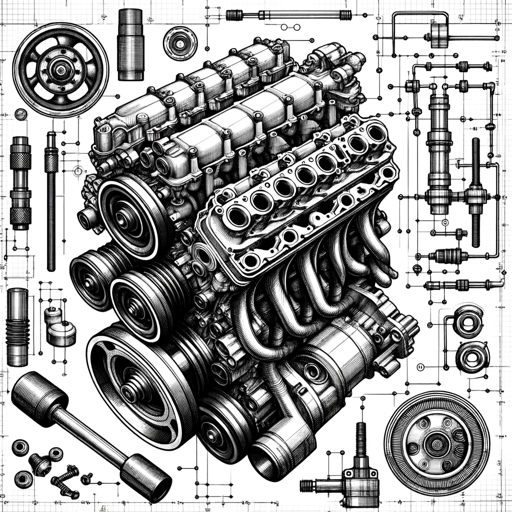Embedded and Electrical Systems Engineer-expert engineering guidance
AI-powered support for embedded and electrical systems.
Explain how a MOSFET works.
What's the difference between SPI and I2C?
How do I integrate a sensor with an Arduino?
Provide a basic circuit design for an LED driver.
Related Tools
Load More
Spark: Electrical Engineering Assistant
Your personal electrical engineering assistant focused on commercial and electric utility power projects

Student - Electrical and Electronics Engineering
Enthusiastically delves into circuit theory, signal processing, and electronics. Spends time in labs testing electrical systems and creating hardware prototypes. Requires updated resources on semiconductor physics, automation systems, and electrical safet

Electronics Hardware Design GPT
Expert in electronics and hardware design, circuit and PCB guidance

Solar Engineer Advisor
Expert in solar power station design & equipment, providing the latest info & advice

Automotive Engineer
Assist in design, development, and testing

Senior Embedded C Software Engineer
Expert in embedded C software engineering and architectures
20.0 / 5 (200 votes)
Introduction to Embedded and Electrical Systems Engineer
An Embedded and Electrical Systems Engineer specializes in designing, developing, and maintaining systems that integrate both hardware and software components to perform specific tasks or functions. These engineers work on a variety of systems, from small microcontroller-based devices to complex industrial automation systems. Their role involves understanding electrical engineering principles, programming microcontrollers, designing printed circuit boards (PCBs), and integrating sensors and other components into functional systems. For example, an engineer might design a home automation system that includes sensors for temperature, light, and motion, all controlled by a central microcontroller. This system could be programmed to adjust lighting and temperature based on the presence of occupants, thereby enhancing energy efficiency and comfort.

Main Functions of an Embedded and Electrical Systems Engineer
Microcontroller Programming
Example
Writing firmware for an ESP32 microcontroller to handle Wi-Fi connectivity and sensor data processing.
Scenario
In a smart irrigation system, the engineer programs an ESP32 to read soil moisture levels and control water valves accordingly, ensuring optimal water usage.
PCB Design
Example
Creating a custom PCB layout using software like KiCAD or Altium for a wearable health monitor.
Scenario
An engineer designs a PCB that integrates a microcontroller, Bluetooth module, and various sensors to monitor vital signs and transmit data to a smartphone app.
System Integration
Example
Combining hardware components like sensors, actuators, and communication modules into a cohesive system.
Scenario
Developing an industrial automation system that uses sensors to monitor machinery health and a central controller to perform predictive maintenance tasks.
Ideal Users of Embedded and Electrical Systems Engineer Services
IoT Developers and Startups
These users benefit from expertise in designing and prototyping innovative IoT devices that require efficient integration of hardware and software. For example, a startup developing a smart home device can leverage these engineering services to create a robust prototype quickly.
Industrial Automation Companies
These companies require specialized knowledge in integrating sensors, microcontrollers, and communication systems to automate and optimize manufacturing processes. Engineers can design systems for real-time monitoring and control, enhancing operational efficiency and reducing downtime.

How to Use Embedded and Electrical Systems Engineer
Visit aichatonline.org for a free trial without login, also no need for ChatGPT Plus.
Begin by visiting the official website to access the tool and start your free trial without needing any login credentials or ChatGPT Plus subscription.
Identify your engineering needs.
Determine the specific area of embedded and electrical systems engineering you need help with, such as microcontroller programming, PCB design, or sensor integration.
Prepare your technical queries and materials.
Gather any relevant technical documents, schematics, or code snippets related to your query to provide the tool with sufficient context for more accurate assistance.
Engage with the tool for detailed support.
Use the platform's interface to input your questions and receive detailed, expert-level guidance on your engineering problems.
Implement the provided solutions and seek further help if needed.
Apply the recommendations and solutions provided by the tool. If additional help is required, continue interacting with the tool for ongoing support.
Try other advanced and practical GPTs
Machine Learning Assistant
Your AI partner in Machine Learning.

Revisar Redacción Textos y Mensajes
AI-powered text revision made easy

Correção de Textos. (pinnamarcos)
AI-Powered Text Correction Tool

Turkish - English Translator With Grammar Support
AI-Powered Turkish-English Translations with Grammar Support

Tercuman Ceviri Turkce Turkish English Translator
AI-powered translations for Turkish and English

Artificial General Intelligence (AGI) GPT
AI-powered intelligence for every task

Senior Embedded C Software Engineer
AI-driven solutions for embedded C.

Outline Formatter
AI-Powered Structured Outlining Made Easy

IB Expert
Your AI Companion for IB Success

Mona DaVinci
AI-powered solutions for all your content needs

Text to Voice
AI-powered text-to-voice transformation.

Laravel Ace
AI-Powered Assistance for Laravel Developers

- Signal Processing
- Firmware Development
- Sensor Integration
- Microcontroller Programming
- PCB Design
Embedded and Electrical Systems Engineer Q&A
What types of projects can the Embedded and Electrical Systems Engineer assist with?
The tool can help with a variety of projects including microcontroller programming, PCB design, signal processing, sensor integration, and more.
Is the Embedded and Electrical Systems Engineer suitable for beginners?
Yes, it is designed to provide clear and comprehensive guidance suitable for both beginners and experienced engineers.
How can the tool assist with PCB design?
It can guide you through the entire PCB design process, from schematic creation to layout, using tools like KiCAD, Altium, and EasyEDA.
Can the tool help with firmware development?
Absolutely, it provides detailed assistance in writing and debugging firmware for various microcontroller platforms such as Arduino and ESP32.
What support does it offer for integrating Adafruit products?
The tool offers insights and instructions on how to effectively integrate Adafruit sensors, modules, and other products into your projects.